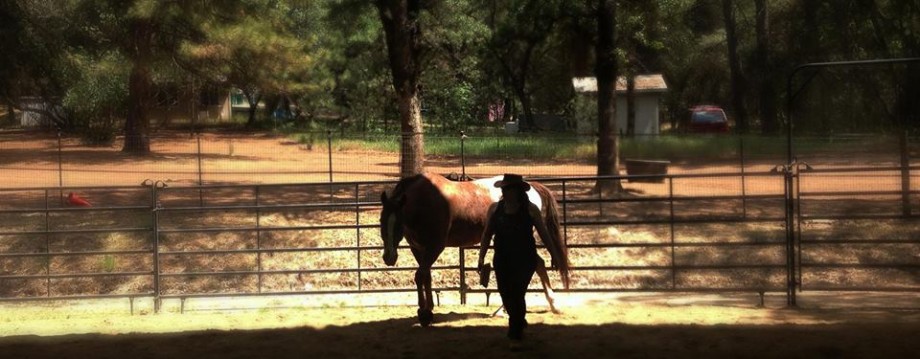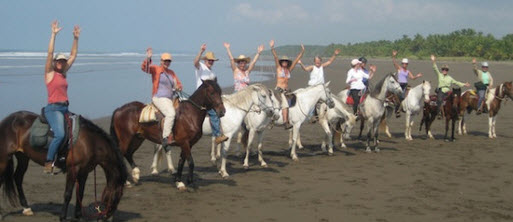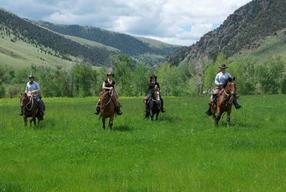The words and diagrams on this page are all mine, except where otherwise noted. Please don’t blame Parelli if I didn’t get something right. Parelli Natural Horsemanship™ is a trademark of PARELLI NATURAL HORSEMANSHIP, INC. which does not sponsor, authorize or endorse this site.
The tip of the tip of the tip of the iceberg, kind of a quick start guide to Parelli vocabulary, shorthand, and concepts. I include this page so that the blog makes more sense to those of you who don’t have horses or who don’t study Parelli.
The ultimate way to train a horse is to train its human.
The Parelli method allows horse lovers at all levels and disciplines to achieve: success without force, partnership without dominance, teamwork without fear, willingness without intimidation, and harmony without coercion. ~ Linda and Pat Parelli
Program Components
The Parelli Program is a people-training program about horses. While the program content focuses on the study of horse behavior and horsemanship skills, the program itself is designed to serve the multiple ways that adults learn: visual, aural, textual, and so on.
The four areas of study are called the Savvys. Combined, the Savvys cover everything we and our horses must learn to become true partners.
Each Savvy has four Levels. If the Levels were an educational system, Level 1 would be elementary school, Level 2 is middle school/junior high, Level 3 is high school, and Level 4 is an undergraduate degree at a university. After you complete Level 4 in all four Savvys you have a solid foundation as a horseman and now you can apply for “graduate school.”
The Parelli Patterns are exercises that develop the mental, emotional and physical fitness of you and your horse. There are patterns for all four levels in each of the four savvys.
The Seven Games are the language of horses and as you progress through the Levels you become more and more fluent.
Horsenality is a method of identifying the key behavioral tendencies and preferences for an individual horse so that you can adapt your training methods to be most effective for that horse. The Horsenality framework provides guidelines for how to communicate with an individual in ways the individual is likely to appreciate, similar to what the Myers-Briggs Temperament Sorter, the Kolbe Index, and the DiSC Report do for humans. The Parelli Horsenality framework also creates common vocabulary for Parelli students and professionals to use when describing the challenges, achievements, questions, and needs of the horse or student.
By The Numbers
7 Keys to Success with Parelli Program
- Attitude
- Knowledge
- Tools
- Techniques
- Time
- Imagination
- Support
- Horsemanship is natural.
- Don’t make or teach assumptions.
- Communication is two or more individuals sharing and understanding an idea.
- Horses and humans have mutual responsibilities.
- The attitude of justice is effective.
- Body language is the universal language.
- Horses teach humans and humans teach horses.
- Principles, purpose and time are the tools of teaching.
For the horse:
- Act like a partner, not like a prey animal.
- Maintain gait.
- Maintain direction.
- Look where you are going.
For the human:
- Act like a partner, not like a predator.
- Have an independent seat.
- Think like a horse.
- Use the natural power of focus.
We humans learn more from these games than our horses do, I think; the horses already know the games and just need to learn how each individual human plays them. The descriptions below are only to give you an idea of each game’s purpose and power. Even the highest level of performance, horsemanship, and success with horses is “just” a combination of the following 7 games.
- Friendly Game. Builds trust and confidence between horse and human.
- Porcupine Game. Teaches horse to move away from steady pressure. Teaches human to be consistent, fair, and able to read the horse and adjust steady pressure accordingly.
- Driving Game. Teaches horse to move away from rhythmic pressure. Teaches human to be consistent, fair, and able to read the horse and adjust rhythmic pressure accordingly. Also teaches human the difference between rhythmic pressure and rhythmic motion (and non-rhythmic commotion!).
- Yo-Yo Game. Teaches horse to go in a straight line, with backward as good as forward. Teaches human to be particular without being critical.
- Circling Game. Teaches horse to maintain gait and direction with relaxation, rhythm, and contact. Teaches human to be patient and to have feel.
- Sideways Game. Teaches horse to move sideways as good as he moves forward and back, in both directions, and both away and toward human. Teaches human to adjust to the horse and use all the games and strategies to teach something complicated.
- Squeeze Game. Builds confidence, respect, and curiosity in both horse and human.
- Suggest
- Ask
- Tell
- Promise
Zones help us refine our communication and troubleshoot what’s happening when we’re asking for A but getting B. (Illustration found randomly on web. If it’s yours, let me know!)  .
.
4 Savvys The Parelli term for the categories of ways we play with our horses, each with its own set of achievements and challenges. Everything we do with horses fits into one of these, and the Parelli program emphasizes the importance of progressing from one to the next and attaining the right balance of all four.
- On-Line. Horse and human communicate on the ground with the help of a rope, typically 12 ft, 22 ft, or 45 ft long.
- Liberty. Horse and human communicate on the ground without a rope.
- Freestyle. Human rides horse on a loose rein, only making contact (with leg, rein, etc.) when guidance is necessary. Example: trail riding.
- Finesse. Human rides horse with contact, for precision and high-level atheticism. Example: dressage or reining.
Find a Parelli Instructor
Horsenality
The Parelli program uses the Horsenality™ model to help students categorize certain behaviors so we can respond appropriately. It’s not meant to label the horse forever as one horsenality type. It’s a key that we learners can use to figure out how we can best communicate with the horse in that moment – “the horse that shows up” – no matter what that horse was like yesterday, last week, an hour ago, or what he’ll be like in the future. You can download the horsenality chart (PDF) although it won’t make much sense without the educational materials.
- Left brain generally means the horse is thinking, not scared, maybe dominant or challenging.
- Right brain generally means prey animal instincts kick in with fear, inability to think, unable to tune in to human.
Each state of mind requires the human to use different strategies to center the horse so he can become a willing, trusting, exuberant, curious, confident, and playful partner. Here’s a little slogan for each horsenality, to give you a sense of what I need to be ready to engage at any moment, and what I mean when I use these abbreviations in the blog posts.
- LBE – Left Brain Extrovert. “Play with me!”
- LBI – Left Brain Introvert. “What’s in it for me?”
- RBI – Right Brain Introvert. “Be gentle with me!”
- RBE – Right Brain Extrovert. “Focus me!”
More information is available here and here.
Free Tips and News
The weekly Parelli newsletter includes a question and answer as well as news, events, follow-ups on horses and people in the program, and special deals on courses and materials: Parelli Connection newsletter subscription page Past issues of newsletter
Equipment and Educational Materials
Visit the Parelli store.
Parelli Education Institute
 Parelli is all about education. Pat says he’s finally found a way to “do this for free,” and has created a 501(3)c non-profit organization to do so. PEI has some great contests and promotions going most of the time. The Parelli Education Institute is an independent, non-profit organization for the natural horsemanship community that focuses on education. Our purpose is to support an advanced natural horsemanship education for students with the skills and aptitude to become extraordinary horsemen, educators, or both. We offer educational programs and opportunities to individuals who wish to create careers around horses. Further, we offer educational assistance to those focused on youth horsemanship, therapeutic horsemanship, and equine welfare.
Parelli is all about education. Pat says he’s finally found a way to “do this for free,” and has created a 501(3)c non-profit organization to do so. PEI has some great contests and promotions going most of the time. The Parelli Education Institute is an independent, non-profit organization for the natural horsemanship community that focuses on education. Our purpose is to support an advanced natural horsemanship education for students with the skills and aptitude to become extraordinary horsemen, educators, or both. We offer educational programs and opportunities to individuals who wish to create careers around horses. Further, we offer educational assistance to those focused on youth horsemanship, therapeutic horsemanship, and equine welfare.
Parelli Patterns
A program of specific things to do, in a defined progression, to give you and your horse a purpose every time you play. Playing without a purpose can confuse or unsettle a horse, because you don’t seem very leaderlike if you’re aimless and casting about for something to do next; some horses take this as a sign to take over your herd of two, because someone has to have a point and you obviously don’t. It takes four to seven sessions for a horse to learn a pattern, and each of the four savvies includes 11 to 30ish patterns, charted on a map so you can check off each session and know exactly what to do next time. Of course this isn’t ALL you do, but it provides a structure that builds confidence in both the horse and the human. Here’s a commercial:
Other Stuff
Stick to Me A game in which the horse has to keep a zone of his body within a specified distance of a zone of your body, no matter where you go or what you do. You start on-line in zone 1 and practice your way up to all gaits at liberty. Think of it as ballroom dancing, where if you drop the lead, your partner can wander off to the snack table without saying goodbye. And where you stay utterly tuned in to your partner so you can sense their suggestions and guide the dance that way so they have more fun.
Partnership Priorities
I made this diagram to help me visualize the priorities for each play session, based on Linda’s article in the May 2009 Savvy Times, “The Ultimate Training Formula.” The diagram uses the placement and a semblance colors of the horsenality chart: 1 – RBE, 2 – RBI, 3 – LBI, 4 – LBE. Each horsenality has a different “first priority” — RBEs need to be calm before they can connect with you, while LBIs need to be connected before they’ll do anything with you Having this diagram in my head helps me do a quick check of our levels in each quadrant before and during our session, so that I can get better about applying pressure and release appropriately, and learn when to be provocative and when to be reassuring. 


















































Just looking around and really loving your blog! Nive job! –Michelle/arabhorselover1
I too enjoy your summary page and description of the program. Great Job!
Thanks! Trying to be concise but accurate … LOL
This was very good at explaining what PNH is all about I am going to “PAY IT FORWARD” to help make the world a better place for horses!!!
Thank you for sharing.
Barbara
http://www.blueroseranch.net
i absouluty love your blog great job!!
~brittany
Hi!
Great blog– I am wondering if there are any Parelli method classes for novices without a horse. In other words is there a ranch where someone can learn the Parelli method, preferably in the Bay Area, close to SF.
Thanks!
Ali, yes! Check out the Bay Area Savvy Players — it’s a huge group, I think about 100 people, all around the bay. Some are licensed Parelli Professionals and I’m sure you’ll find Parelli students nearby(ish) who can help you get started. Most PNHers love to share the philosophies and methods the Parellis teach, so be warned for a blast of enthusiasm. LOL
http://www.bayareasavvyplayers.org/
Hi, just read your blog, Thanks for taking the time and effort to simplify some bits I have been trying to get straight myself. I was struggling with the chart as my Hispania-arab seemed to be smack in the middle, Now he is just about a LHE
Really enjoyed reading in your blog. Thanks.